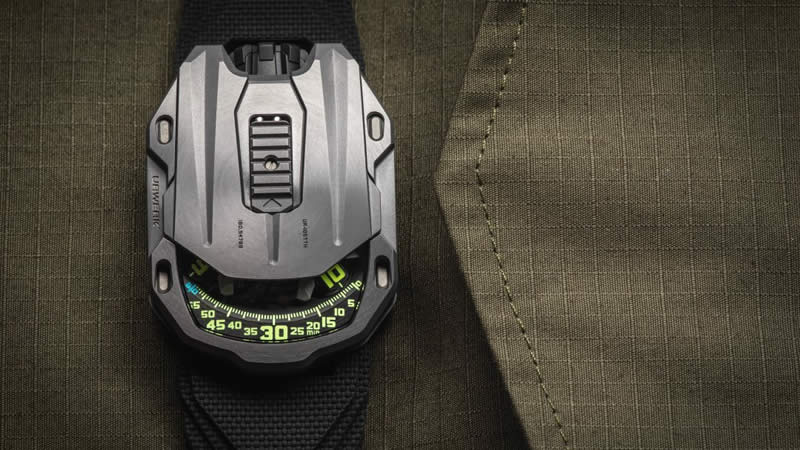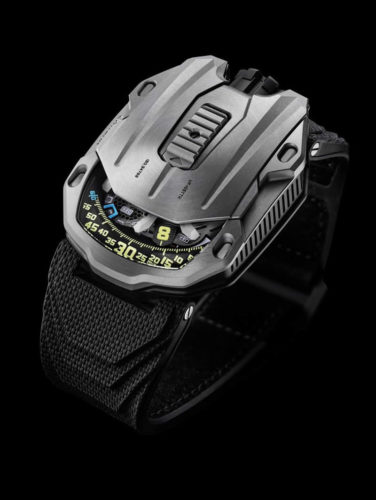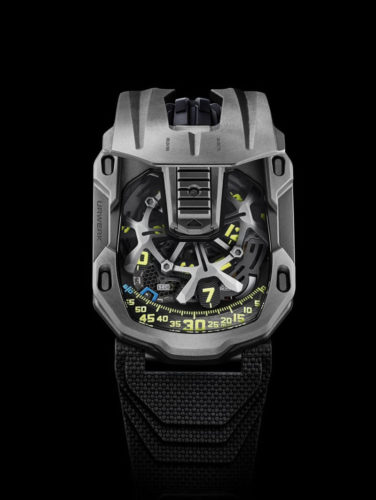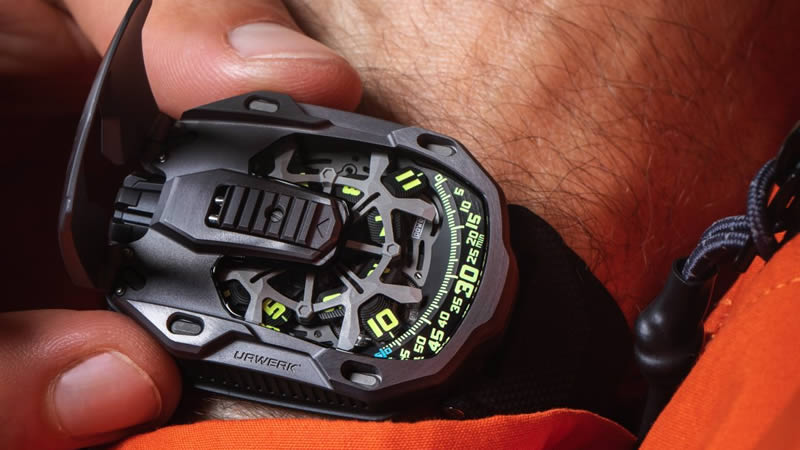The Newest Black Titanium Watch from Urwerk – UR-112 Aggregat

© urwerk
When it comes to representing new ways of showing time, few brands can beat the ingenuity, ingenuity, and technical magic of URWERK. Since 1997, master watchmaker Felix Baumgartner and artistic director Martin Frei have been developing contemporary adaptations of screens such as revolving hours and backward minutes to show elapsed hours.
Today, Urwerk’s Special Project collection welcomes the new UR-112 Aggregat unit, the epitome of sophistication, technology, and radical design. Based on the brand’s characteristic travel clocks, the UR-112 is equipped with two flying carousels with hopping triangular prisms to offer you digital hours and minutes in a new but exquisite 3D Urwerk format. Hidden seconds in a modern black and gray titanium case are hidden under a hunter-style case.

Like the Atlantic, the UR-112 unit has a streamlined body with elegant curves and rounded curves. And like the Atlantic, it’s made from a lightweight material – titanium – and even has a center seam that crosses the case from one end to the other. The dimensions of the case (42 mm wide x 51 mm long x 16 mm thick) do not reveal the complex architecture of the case, which is made of black and powder-coated titanium with a gunmetal PVD coating.

Viewed from the wrist, the rounded rectangular body of the case shows the hours and minutes horizontally (somewhat reminiscent of a driver’s watch) and tapers towards the ends, reducing the height. Even the back of the case has a center seam that turns into floating tabs at the end of the case.

The digital hour and minute displays are housed in two cylindrical sapphire glass cases that are separated from one another by a central seam. Digital clock display on the left; Minutes right. Each indicator is based on triangular prisms that move in sharp, precise jumps (without clipping the numbers), much like old airport split-flap displays (Solari). All 12-hour digits and minutes in 5-minute steps are engraved on prisms and filled with a blue Super-LumiNova that shines in the dark. The function of the jumping hour display is controlled by the progressing minutes. At the 60th minute, the force accumulated over the past 3,600 seconds is used to change the clock.

However, to see the seconds, the hunter’s case must be lifted using the two side pushers on the side of the case. The hinged titanium hood, which is decorated with horizontal speed lines that reflect the radiator grille of the Bugatti Atlantic, reveals the digital second’s display, which is also calibrated every 5 seconds. Engraved on wafer-thin silicon plates, the small figures run under a magnifying glass on the right and are framed by a bright red plaque with a white arrow. Perfectly symmetrical, on the left side of the watch’s anatomy, there is a power reserve display, the only analog display of the UR-112 unit.
Heavy Mechanics
Although the watch weighs only 25.2 grams, it is a heavy mechanical genius with eight titanium planetary gears. The UR-112 unit is based on a long, slender rod, a so-called propeller shaft, which runs horizontally over the middle area between the second and the power reserve indicator in order to transmit the power required for the hours, minutes, and seconds of jumping. Although hidden by the seam, the gear shaft has two gears, one at each end, and transmits all of the power it needs through an intricate set of gears.
Felix Baumgartner explains: “We operate all displays and mechanisms of this UR-112 from a single energy source. This energy is dissipated sparingly, sometimes even ‘recycled’, so that from the digital seconds on top of the dial to the dragged minutes and the opposite end to the jumping hours, each screen receives exactly the required dose of energy.
Despite its radical architecture, the surfaces of the watch are very traditional, with round and straight grains, Geneva stripes, and a polished screw head.
The UR-112 AGGREGAT is now available from URWERK retailers for CHF 250,000 (approx USD 274,000).


